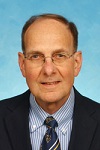Ethics Corner


John P. Lubicky, MD, FAAOS, FAAP
W. Timothy Ward, MD
This hypothetical case of possible unethical behavior of a surgeon is presented by John Lubicky, MD and the subsequent discussion is written by guest discussant Tim Ward, MD.
The Committee would like to thank John Lubicky and Tim Ward and appreciates their valuable contributions.
John Lubicky presentation:
A high volume, senior faculty spine surgeon at a university hospital has a surgical practice that consists mainly of the operative treatment of AIS. Most of the pre-op curves measure in the 40 – 45 degree range and most of the patients are skeletally mature or nearly so. Aside from having the scoliosis, most of the patients are asymptomatic. He is a high earner for the department. He is a fast surgeon and has few complications.
He works with residents who are confused about his indications for surgery and from what they have been taught about the natural history of AIS feel many of these cases are not indicated. They have discussed this with their chairman because they feel this is not ethical practice. The chairman declines to address this with the faculty member because he has stated he would leave if anyone tries to curtail his practice or OR time. Other faculty are sympathetic to the residents’ concerns but are powerless to do anything.
Is this attending unethical? His surgical indications are marginal for most of his patients. How should this kind of a situation be handled?
Tim Ward discussion:
The premise of this case scenario is that the surgeon in question may be acting in an unethical manner for reasons that presumably benefit him at the expense of exposing patients to needless surgical risk. I think that we can all agree that no surgeon should ever expose a patient to any operation that is definitively unindicated because the surgery absolutely will not help the patient or because the surgery has been justified on information that the surgeon knows to be definitively untrue. I do not believe that this case scenario rises to the level of definitive unethical behavior.
The recommendation for surgical fusion on a nearly skeletally mature individual with a 40 to 45-degree curve is in fact quite common in North America. Many recent articles in the peer review literature recommend this approach. The non-surgical approach to a 45-degree curve is probably a minority position in this country although there is a growing body of evidence that non-surgical treatment of the curves in question in our case scenario is a very viable option. A fair examination of the long-term medical consequences of AIS, whether the curve is progressive or not, reveals that definitive serious cardiopulmonary consequence and disabling pain are not generally expected. Surgeons ought not frighten patients into choosing surgery under the guise of preventing cardiopulmonary issues or disabling pain. The literature does tell us that there is a chance that a 45-degree curve may progress into adulthood and progression may be a real cosmetic or psychological concern to the patient. The patient may well choose to undergo surgery to address these cosmetic concerns. Our responsibility as surgeons is to give patients accurate information on the natural history of AIS and to point out the risks and benefits that can be expected if surgery is elected. The decision to undergo elective AIS surgery should be entirely up to the patient and family. We surgeons should never attempt to sway a patient with a 40 to 45-degree curve into having surgery but rather should discuss honestly all of the factors that may help the patient make his or her own decision. If this type of honest, balanced, open discussion takes place many patients will elect to forego surgery but many others will opt to have surgery. There is no right or wrong patient decision but there is a right or wrong way to supply information to patients.
Being a fast, technically proficient surgeon with a high-volume practice that generates lots of money is an enviable position to have if the surgeon is honest with what he/she says to patients. House staff and partners may not be privy to our surgeon’s discussions with his patients. The house staff may not really have the knowledge to know what is right in this situation and the partners may be motivated by jealousy rather than altruism. Certainly, if the Chairman believes that our surgeon is acting unethically the Chair has an ethical responsibility to discuss the matter with the surgeon and if our surgeon is found to be unethical and chooses to leave rather than alter his practice pattern - good riddance, as patients and house staff will be better off.
We surgeons have an ethical responsibility to supply accurate information to patients with AIS and to give a good faith effort to help patients and families make their decision concerning surgery. We should never influence these patients to have surgery simply because it will provide us with either fame, fortune, or academic advancement. On the other hand, we should respect patients concerns even if these concerns may be more cosmetic or psychological as opposed to conventionally medical. It is very difficult for us surgeons to police one another and no oversite will totally eliminate unethical behavior. The best approach is for all of us to honestly put the patients’ interest above our own and let the chips fall where they may with respect to the decision to opt for or against surgery. House staff attendance in clinics that are staffed by knowledgeable, ethical senior staff is the best antidote to prevent the continuance of unethical surgical behavior by future surgeons. Our journals must also be open to alternative approaches to the care of AIS patients.
In conclusion, only our case scenario surgeon really knows whether his behavior is ethical or unethical. We need to police ourselves. Unfortunately, we don’t have enough knowledge about AIS to rely on administrators, organizations, or Chairs to do the policing for us.
Chair: Kamal N. Ibrahim Committee: Timothy S. Oswald; Ioannis Avramis (C); Eric J. Belin (C); Abdul M. Mohd Hussein (C); James M. Eule; Timothy A. Garvey; H. Robert Tuten; B. Stephens Richards III, Chair Elect; Jochen P. Son-Hing; Jacob M. Buchowski; David A. Hanscom



